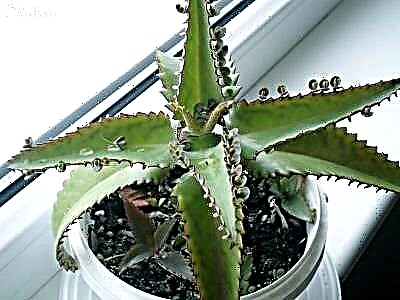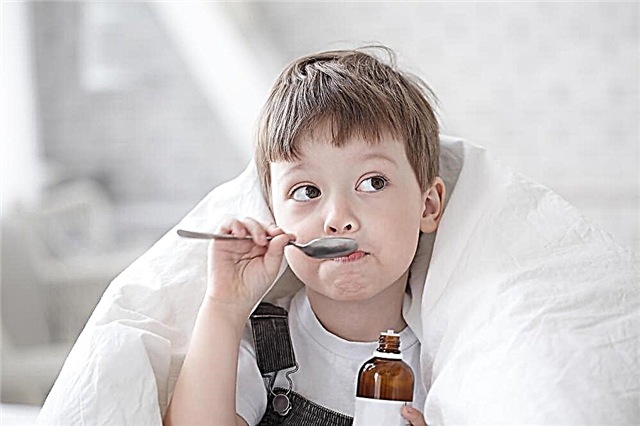
When a child has a runny nose, the last thing you want is to resort to the use of synthetic pharmacy drugs. And therefore, many mothers turn to proven folk recipes. One of the natural remedies that has long been used in the treatment of the common cold is kalanchoe.

What is it?
Kalanchoe grows naturally in Africa, South America and Asia, and in our country it is often grown on windowsills as indoor plants. There are more than 200 species of this evergreen, but only some of them are used for medicinal purposes, for example, the feathery Kalanchoe. The leaves of such a plant are rich in vitamin C, tannins, organic acids, flavonoids and various microelements.
Principle of action and medicinal properties
Kalanchoe with a runny nose in children has a symptomatic effect... The juice of this plant has an anti-inflammatory effect, stimulates the immune system, relieves swelling, has a bacteriostatic and bactericidal effect, helps to heal wounds and stop bleeding. The main effect that Kalanchoe has with a cold is stimulation of sneezing, as a result of which the nasal mucosa is cleared and it becomes easier for the child to breathe.

Indications
The use of Kalanchoe when a child has a runny nose is recommended if:
- Other remedies for the common cold are not available, for example, the child is out of town.
- There is no other way to clear mucus from the nose.
- Other medicines don't work.
- Parents want to avoid taking drugs from the pharmacy.
In addition, the sap of this plant should be instilled only in a situation where nasal breathing is completely absent. If the baby is at least slightly able to breathe through his nose, the use of Kalanchoe should be abandoned. The plant is indicated only in case of severe edema that blocks the nasal passages, or in the case of complete blockage of air with thick snot.
Contraindications
Kalanchoe is not used in children with:
- Allergic rhinitis and other types of allergies.
- Intolerance to this plant.
- Diseases of the liver.
- Low blood pressure.

How to apply?
In the treatment of Kalanchoe rhinitis, the following rules should be observed:
- For juice, large leaves of a plant older than 3 years are chosen, which are cut into pieces and placed in a garlic press. The resulting juice is diluted with water 1 to 1.
- It is recommended to bury the remedy twice a day, 2-3 drops in each nasal passage.
- The juice should be warm (about body temperature).
- Manipulation is not performed before bedtime.
- Kalanchoe juice is instilled no more than 5 days in a row.
- If there are any side effects, Kalanchoe treatment should be discontinued.
- If you dripped the juice of this plant into the child and this caused a very strong attack of sneezing, next time the product should be diluted more with water and administered in a smaller dose.
- Do not add a new dose of juice until the sneezing caused by the previous instillation has stopped.
- Aloe juice can be added to Kalanchoe juice in the same amount.
- Older children can moisten cotton turundas with Kalanchoe juice and place them for one or two minutes in each nasal passage.
- With good tolerance, it is permissible to use Kalanchoe juice for prophylactic purposes, instilling it several times a day during the SARS epidemic season.
See the next video for more details.
Features of application for infants and newborns
It is important to remember that the treatment of babies under one year old must be agreed with the doctor.
The pediatrician will help determine if the runny nose is physiological (in this case, no treatment is required) or whether other treatment is required (for example, against allergies).
Using Kalanchoe juice in the treatment of infants, the dosage is reduced to 1 drop in each nasal passage, and the juice itself is diluted with water more (1 to 3). Instead of instillation, children of the first year of life can lubricate the nasal passages with Kalanchoe juice using cotton swabs.

Tips
Before using Kalanchoe juice to treat rhinitis, check your baby's reaction to this plant. Place one drop under the nose of the crumbs above the upper lip and rub into the skin. After an hour, check the skin - if redness appears, you should refuse to use Kalanchoe. If the skin is normal, drip 1 drop of juice into each nostril of the baby and wait a little. If such actions did not lead to a worsening of the condition, then you can use Kalanchoe in the recommended dosages.

Instead of self-made Kalanchoe juice, you can use a ready-made pharmaceutical product, however, pay attention to the composition. Do not give your child juice with added ethyl alcohol. Also, homeopathic remedies are not recommended, because there is very little Kalanchoe juice in such preparations.
Note that the softer effect differs Kalanchoe broth. Having torn off a few leaves of the plant, they are poured with 100 ml of water, brought to a boil and allowed to brew a little. The cooled broth is recommended for use before the age of 2 years. Although it has a less pronounced effect than juice, it is safer.

Reviews
Parents who have tried Kalanchoe in the treatment of a runny nose in their children confirm that the remedy causes a strong sneezing, as a result of which excess mucus is quickly removed from the nasal passages and the child's breathing is facilitated. Some note a negative effect in the form of secondary edema and severe drying of the mucous membrane. Allergies are not uncommon. There are also babies on whom Kalanchoe juice does not have the proper effect.
Doctors are wary of the treatment of Kalanchoe, preferring to turn to more effective and safe means for children. They warn parents that the use of the juice of this plant is quite unpredictable in terms of side effects on the child's body.




